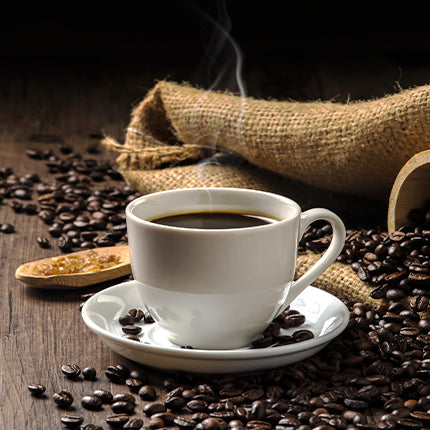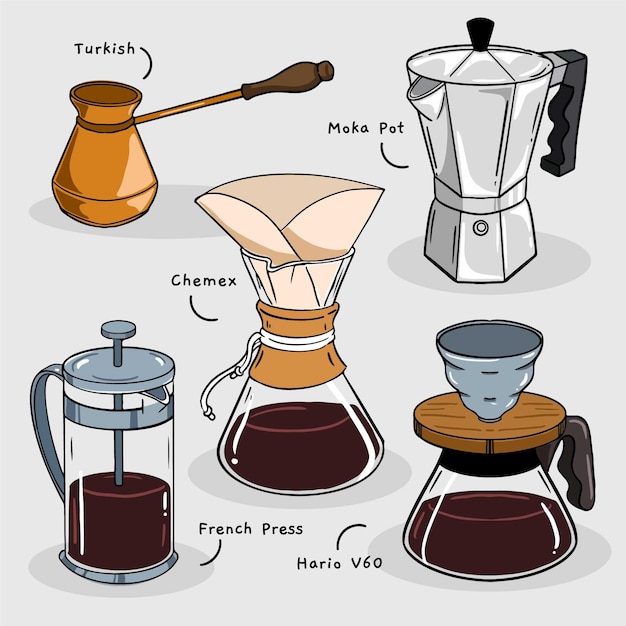The Scientific Research Behind Coffee Developing: Just How Temperature and Time Affect Your Drink
Understanding the scientific research behind coffee developing exposes that temperature and time are not mere variables however pivotal aspects that determine the drink's taste account and general quality. The optimal developing temperature commonly drops between 195 ° F and 205 ° F, while the period of removal differs significantly across different techniques. This interplay of elements can lead to a cup that is either fascinating or frustrating. As we check out the subtleties of these aspects, the concern arises: exactly how can one efficiently balance temperature and time to attain that ideal brew?
The Chemistry of Coffee Removal
The chemistry of coffee removal explores the complex processes that transform raw coffee beans into the aromatic beverage taken pleasure in worldwide. This makeover mainly involves the solubility of various compounds present in the beans, which are influenced by aspects such as work size, water quality, and the developing technique employed.
Throughout the brewing procedure, warm water acts as a solvent, extracting soluble substances, including caffeine, sugars, lipids, and acids, from the coffee premises. Each substance adds to the taste account, fragrance, and body of the final drink. Acids are accountable for bright and tasty notes, while oils contribute to an abundant mouthfeel.
The removal procedure is not uniform; different substances dissolve at different prices. The first stages of brewing essence acids and sugars, bring about an enjoyable level of acidity, while long term extraction can lead to anger as a result of over-extraction of unfavorable substances. Understanding these chemical interactions is essential for maximizing developing strategies, as the equilibrium between extraction time and water temperature can substantially influence the total quality of the coffee. Eventually, mastering the chemistry of coffee extraction is key to attaining a all-round and delicious mug.
Suitable Developing Temperatures
Finding the appropriate developing temperature is important for opening the full capacity of coffee tastes and scents - coffee brewing methods. Research study shows that the ideal range for brewing coffee exists between 195 ° F to 205 ° F(90 ° C to 96 ° C) Within this range, the extraction process efficiently dissolves the preferable soluble substances in coffee beans, causing a delicious and balanced mug
Developing at lower temperatures, such as below 195 ° F(90 ° C ), may lead to under-extraction, yielding a weak and acidic mixture with low-key flavors. On the other hand, brewing at temperature levels surpassing 205 ° F(96 ° C) can lead to over-extraction, producing a severe and bitter taste due to the excessive dissolution of unwanted substances, such as tannins.
Additionally, the optimal brewing temperature level can vary depending upon the coffee bean kind and roast level. Lighter roasts usually profit from slightly greater temperature levels to enhance their intricate taste profiles, while darker roasts might be much better suited to lower temperatures to reduce anger.
Eventually, keeping accuracy in developing temperatures is essential for achieving an unified equilibrium of tastes, making certain that every mug of coffee provides an enjoyable sensory experience.
Effect of Developing Time
Developing time plays an essential function in establishing the flavor account and total high quality of coffee. The removal process, which affects the preference, scent, and body of the beverage, is mainly depending on for discover this info here how long the coffee premises touch with water. Much shorter developing times can result in under-extraction, bring about a weak or sour taste, as insufficient soluble compounds are liquified. Conversely, extended developing can result in over-extraction, where unfavorable compounds are released, resulting in an astringent or bitter taste.
Optimal brewing time differs relying on the approach utilized and the work size of the coffee. As an example, a French press usually needs concerning four mins, while espresso removal is normally finished within 25 to 30 seconds. It is necessary to calibrate developing time in conjunction with other variables, such as water temperature level and coffee-to-water proportion, to accomplish the wanted flavor account.
Understanding the influence of developing time allows coffee enthusiasts to improve their developing strategies, inevitably boosting the sensory experience of their mug (coffee brewing methods). With careful interest to this variable, one can open the full possibility of the coffee, disclosing its one-of-a-kind features and nuances
Developing Techniques and Their Results

For instance, methods like French press and cool mixture permit for a much longer steeping time, leading to a fuller body and durable taste because of enhanced extraction of oils and soluble solids. On the other hand, coffee brewing uses high pressure and a shorter removal time, producing a focused shot that highlights extreme tastes and an abundant crema.
Pour-over methods, such as Chemex or V60, supply an even more regulated extraction process, allowing the brewer to control circulation price and water distribution, which can improve brightness and clarity. Percolation methods cycle water through the coffee grounds numerous times, leading to a stronger, commonly bitter flavor.
Lastly, using paper filters versus steel filters can additionally impact the final preference; paper filters generally yield a cleaner cup by capturing oils and great fragments, while steel filters allow even more oils to pass through, adding to a fuller mouthfeel - coffee brewing methods. Comprehending these nuances can raise the coffee experience substantially
Tips for Perfecting Your Brew
A well-executed mixture can transform even the easiest coffee into an impressive experience. Grind the beans simply prior to making to take full advantage of quality, ensuring the work size matches your developing approach-- coarser for French press and finer for espresso.
Water high quality plays a critical role; use filtered water totally free from contaminations. The optimal developing temperature level varies between 195 ° F and 205 ° F(90 ° C to 96 ° C ) Too hot can blister the coffee, while too cool might under-extract flavors.
Timing is equally crucial. For immersion methods, steeping for 3 to five minutes is optimum, whereas drip approaches usually take around 5 minutes. Trying out mixture times to find your preferred stamina.

Conclusion
In recap, the elaborate connection between temperature and time is paramount in the coffee developing procedure. Abiding by ideal developing temperatures in between 195 ° F and 205 ° F, alongside specific timing tailored to each approach, makes sure the preferred taste account is achieved. Understanding these clinical principles equips individuals to fine-tune their developing techniques, inevitably causing a much more pleasurable and well balanced coffee experience. Proficiency of these aspects is necessary for any kind of coffee fanatic looking for excellence in their beverage.
Comprehending the scientific research behind coffee developing reveals that temperature and time are not plain variables yet critical elements that dictate the drink's flavor account and total high quality. Recognizing these chemical communications is crucial for optimizing developing methods, as the balance between extraction time and water temperature level can significantly affect the total high quality of the coffee.Developing time plays a crucial role in establishing the flavor account and total quality of coffee. By concentrating on these components-- bean top quality, my company grind dimension, water temperature, soaking time, and ratio-- you can elevate your coffee brewing process, resulting in a consistently remarkable mug.
In summary, the complex partnership in between temperature and time is vital in the coffee developing procedure.